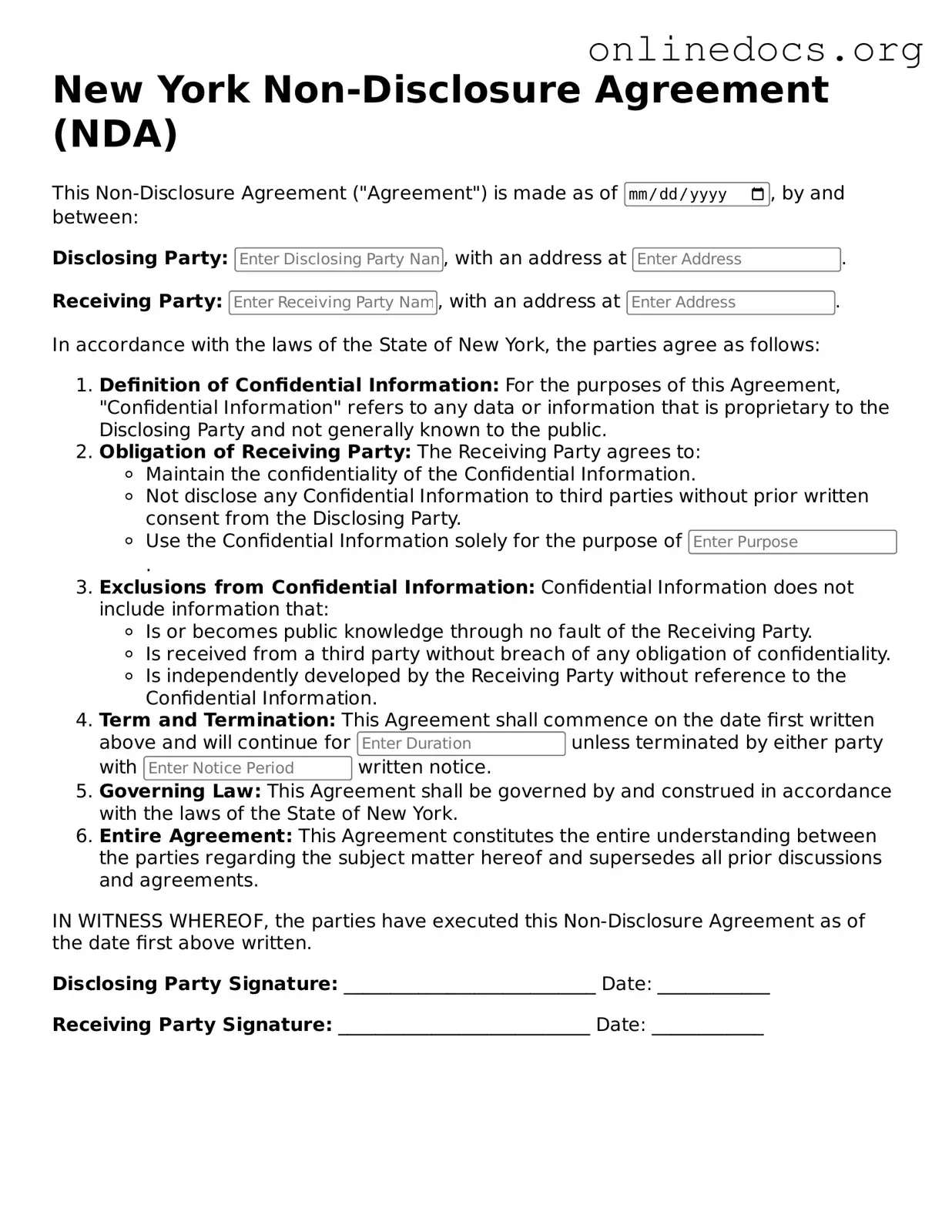Filling out the New York Non-disclosure Agreement (NDA) form can be straightforward, but many individuals still make common mistakes. One frequent error is failing to clearly identify the parties involved. It’s essential to specify who is disclosing information and who is receiving it. Omitting this detail can lead to confusion and potential legal issues down the line.
Another mistake is neglecting to define what constitutes confidential information. The NDA should include a clear and comprehensive definition of the information that is protected. If this is vague or incomplete, it may weaken the agreement's enforceability.
People often overlook the duration of the confidentiality obligation. An NDA should specify how long the recipient is required to keep the information confidential. Without this timeframe, the agreement may lack clarity, leading to misunderstandings about the responsibilities of the parties involved.
Many individuals also fail to consider the consequences of a breach. An effective NDA should outline the repercussions of violating the agreement. This can include legal remedies or financial penalties, which help deter breaches and clarify expectations.
Another common oversight is not including the governing law clause. This clause specifies which state’s laws will govern the agreement. Without it, parties may face uncertainty regarding legal interpretations and enforcement.
Some individuals mistakenly believe that verbal agreements are sufficient. However, NDAs should always be in writing to ensure that all parties have a clear understanding of their obligations. Relying on verbal agreements can lead to disputes and confusion.
People often forget to date the agreement. A date is crucial as it establishes when the obligations begin. Without a date, it may be unclear when the confidentiality terms take effect.
Additionally, failing to seek legal advice can be a significant mistake. Many people assume they can draft their own NDA without professional help. However, consulting with an attorney can provide valuable insights and ensure that the agreement meets legal standards.
Lastly, some individuals may not review the NDA thoroughly before signing. It is vital to read the entire document and understand all terms and conditions. Signing without comprehension can lead to unintended consequences and obligations.
